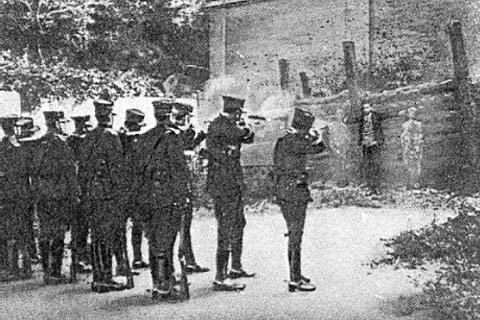We need a new introduction to Christianity. Also for children and young people. An introduction to the liturgy does not only mean to know something about the celebration, although of course that is indispensable both theologically and doctrinally. Young people and children should participate in liturgies celebrated with great dignity, which are entirely permeated by the mystery of God in which the individual konws himself to be included. Active participation does not mean to do something, but to enter into the worship and the silence, into listening and also the prayer of petition and all that which really constitutes the liturgy. As long as that does not happen, there will be no liturgical renewal. We have to turn around one hundred eighty degrees. Youth ministry should be a place where the encounter with the living Christ in the Church takes place . Where Jesus Christ appears as someone of yesterday, neither liturgical education nor active participation is possible. As long as the awareness of the living Christ does not awake again, nothing will come of the much-needed renewal.Cardinal Canizares Lloera makes some very solid points in his statement. I often wonder what kind of formation our youth receive when it comes to the Holy Sacrifice of the Mass, especially where music is concerned. The trend nowadays is to incorporate elements from the Protestant Praise and Woship genre into these Masses for the youth. While this style may work for the Protestants, I see it as something that is incompatible with the Holy Sacrifice. A lot of the songs, while having some basis in the psalms, sound more like pop tunes, especially when drums, electric guitars and bass guitars are thrown in for good measure. When this happens, it appears to me that the sacred nature of the liturgy is lost. Some of the songs also seem focus on "me" and "we", making us the principle actors. "Here I am to worship" is more along the lines of what I am doing, rather than focusing on the Who I, and the rest of the faithful, have come to worship.
Youth ministry needs to have a solid liturgical component as part of its mission. It is not enough to have the kids show up at Mass and give them music that is akin to something they hear on their secular radio stations. Cardinal Canizares-Lloera makes a strong case that liturgical preparation should happen. The young people need to understand just what is happening during the Holy Sacrifice of the Mass. They need to be taught that during the Mass, the veil between heaven and earth and time and space is lifted and that we are entering into a profound encounter with God.
The Prefect also touches upon an important aspect of the liturgy, that it should be celebrated with great dignity. In some of the "youth" Masses that I have attended, there seems to be an absence of this dignity. It all seems to take on the appearance of some casual, warm and fuzzy gathering. Everything seems to be relaxed including, lamentably, the rubrics in a well-inteded, but, misguided effort at making the Mass relevent to the teens. The homily can certainly touch upon issues concerning teenagers and how these relate to the readings of the day, but, the young people need to realize that the Holy Sacrifice is something different, something extraordinary. The ineffable Paschal Mystery unfolds before us at every Mass, but, how often do the young people get to hear that? It is not enough to simply get them to the church for Mass. We need to do our part to introduce them to the Church's most glorious treasure. We need to make every effort to teach them Sacred Music, as defined by the authoritative documents of the Church and the writings of the popes, incluing Pope Benedict XVI.
Cardinal Canizares-Lloera is saying nothing new. In fact, as I read his statement, I am reminded of one of the findings made in the Lineamata for the Synod on the Eucharist, wherein the Synod Fathers listed the music in the "youth Masses" as a shadow. While the Prefect did not specifically touch upon the music, it is not a stretch to say that certainly the music used in these particular liturgies should also be dignified.
As adults, we are responsible for handing on the Faith to the next generation. Part and parcel of that Faith is our treatment and understanding of the Holy Sacrifice of the Mass. The Second Vatican Council stresses that the Mass is th "source and summit" of our life as the Church. However, if we do not properly hand down what we ourselves have received, as St. Paul writes in First Corinthians, then we will be failing our youth.
To read Fr. Finigan's commentary on the subject, please follow the link below:
http://the-hermeneutic-of-continuity.blogspot.com/2010/07/cardinal-canizares-on-youth-and-liturgy.html











